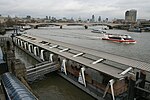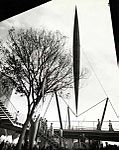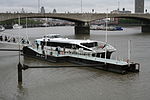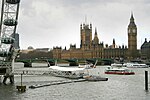Hungerford Bridge and Golden Jubilee Bridges
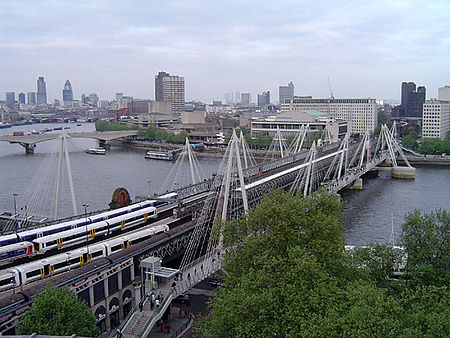
The Hungerford Bridge crosses the River Thames in London, and lies between Waterloo Bridge and Westminster Bridge. Owned by Network Rail Infrastructure Ltd (who use its official name of Charing Cross Bridge) it is a steel truss railway bridge flanked by two more recent, cable-stayed, pedestrian bridges that share the railway bridge's foundation piers, and which are named the Golden Jubilee Bridges.The north end of the bridge is Charing Cross railway station, and is near Embankment Pier and the Victoria Embankment. The south end is near Waterloo station, County Hall, the Royal Festival Hall, and the London Eye. Each pedestrian bridge has steps and lift access.
Excerpt from the Wikipedia article Hungerford Bridge and Golden Jubilee Bridges (License: CC BY-SA 3.0, Authors, Images).Hungerford Bridge and Golden Jubilee Bridges
Northumberland Avenue, London Covent Garden
Geographical coordinates (GPS) Address External links Nearby Places Show on map
Geographical coordinates (GPS)
| Latitude | Longitude |
|---|---|
| N 51.506111111111 ° | E -0.12 ° |
Address
Hungerford Bridge
Northumberland Avenue
WC2N 5AQ London, Covent Garden
England, United Kingdom
Open on Google Maps
